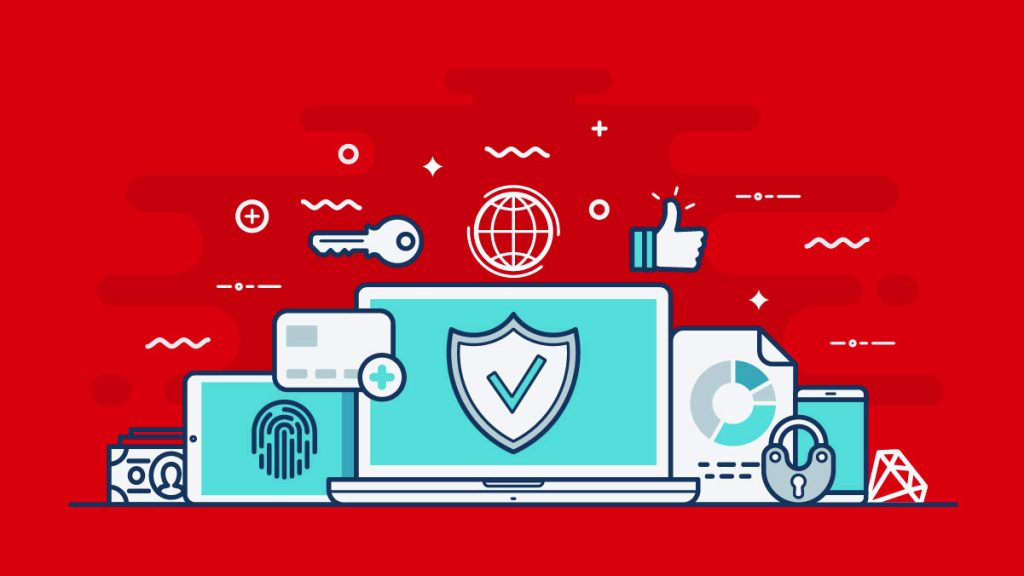
Over recent years, many events have led data privacy to become a priority topic to discuss. Data security has become a significant concern in the financial sector, especially with the dynamic client needs. Banks, by nature, manage extremely sensitive customer data at massive volumes. Any data breach can prove fatal to a bank’s reputation and break the customer’s trust. Clients nowadays expect so much when it comes to bank security. Here is an overview of what banks need to do to deliver.
Valid Concerns
Firstly, and before getting into the prevention aspect, let us look at the valid security concerns of customers. Clients often worry about human error, which is an eternal worry regarding any security conversation. A single security employee could jeopardize data security if he acted carelessly with their credentials. Hackers can easily exploit such tiny margins and find access to the bank’s internal systems. On the other hand, concerns arise when customers consider the online aspect. Hackers are way more competent at what they do now and keep finding ways to attack websites and steal critical data. This is a highly concerning matter for clients regarding bank security.
Moreover, clients rely on online banking and bank websites to finalize their daily financial transactions, putting their faith in their financial institution of choice. They expect their faith to be repaid with the utmost online security measures. Customers also expect banks not to abuse their trust and tamper with their critical data and information.
With big names falling victim to security breaches, bank security has become a far more complex issue for financial organizations. Incidents like The First American Corporation data breach, with over 885 million financial and personal records exposed, gave the community a lot to think about. Making the fact that banks need to up their security game.

How Can Bank Security be Optimized to Meet Customer Needs
Financial institutions can optimize bank security in both the regular and digital aspects. Clients’ data security demands keep evolving., and banks need to be prepared to deliver. Respectable names in the banking sector are regularly updating their security practices to keep up with the necessity of data security.
Encryption
Encryption should never be banks’ first line of defense, but it’s an essential element. It can at least serve as a lock or a safe combination. After a data breach, even if an attacker gains access to critical data, it will be unreadable and unusable. The most common encryption standards are Rivest-Shamir-Adleman (RSA) and Advanced Encryption Standard (AES).
Additionally, two-factor authentication can add an extra layer of security and encryption. It usually requires the employee or client to enter an additional credential they only know about, like passwords, mobile phone SMS authentication, and biometric verification.
Finally, implementing Electronic IDentification allows you to expand your encryption and two-factor authentication to include techs like facial recognition, single-use passwords, and E-signatures.
Carefully Choosing Your Third-party Partners
Banks often work in coordination with third-party apps or even partners. For example, banks can work hand in hand with upcoming fintech organizations or partner up with developers to create and manage their apps. When done poorly, this can have catastrophic consequences. The KeyBank data breach is a prime example. The data breach happened because of a third-party insurance services vendor, Overby-Seawell. It leaked names, mortgage information, phone numbers, and even social security numbers. Customers expect better decision-making when it comes to choosing third-party partners. Bank security is no easy task; it can be even more challenging when your choice of partners weighs you down. The financial institution should perform a thorough background check and study the year-to-date performance of the partner they seek to partner with. Review their blunder history. Are they prone to fail, and did they expose their partners before? A bank must answer critical questions before allowing third parties to access data.
Transparency and Clear Data Consent
In the age of digitalization, consent between the customer and the bank may get blurry upon signing the piles of papers required by the bank or even a contract of agreement between the bank and the client. Clients might not fully comprehend the sensitivity of the information they are providing or even the consent they are giving to the bank. Communicating clearly and with transparency with the customer is a make-it-or-break-it factor. Without transparency, the relationship between the client and the bank can be misunderstood. The client might think the bank is abusing their trust and accessing specific data against their wishes.
Furthermore, various marketing agencies will shell out copious amounts of money to acquire data concerning clients’ habits. Behavioral data is collected to help the marketing agencies tailor their ads to specific users, maximizing their reach and effect. Selling information is a frowned-upon practice, yet it is not illegal. Customers constantly fear their data being sold to the highest bidder and ensuring their safety with transparency and consistent communication will prove very fruitful.
Yet, with the introduction of open banking, the matter gets trickier. The critical element is to increase customer comfort by categorizing customers by privacy preferences. Ditching the one practice-fits-all method and engaging in a personalized process will clarify consent acquisition. Banks should remain consistent with where they stand on privacy to minimize the confusion with the overall proposition.
A Harmonized Privacy and Security Association
Without a clear and precise security protocol, it is nearly impossible for financial institutions to protect themselves and their customers from outsider threats, or even ones from within. Creative and up-to-date policies aimed to educate and prepare employees on the danger and importance of data security, bank security can never be optimal.
Moreover, hackers have gotten better, way better. Their attacks are more intricate. Gone are the days of brute force and throwing everything at the wall hoping something sticks. Hackers now come prepared with a plan and keep an eye on the least typical slip-up so they can prey on your clients’ data. Banks can never rely upon outdated software, nor unsupervised networks. Private networks should be the only way to operate. Banks should limit access to certain employees. Respecting the privacy of customers and the bank itself is vital.
Another critical aspect would be regular audits. It is a superb approach for banks to audit their security protocols regularly. Optimizing how they are being implemented. Any cracks in the security wall should be tended to immediately, and the price of negligence should be high. The perfect harmony between privacy and security can elevate bank security to a new level.
Concluding Thoughts
It goes without saying, diligence is critical. Keeping up with the customers’ needs is not a task for today, but one for every day. Banks should always remain flexible to go with the flow of technology and dynamic client needs. By addressing these needs, banks stay ahead of the legal and regulative wave. And it all lies in the proper viewpoint of each customer. With more data than ever, clients should constantly be reminded how tight bank security is. Such new techniques should not be viewed as cumbersome addition. Privacy and security should become a design choice implemented by current and future financial institutions.
Inside Telecom provides you with an extensive list of content covering all aspects of the tech industry. Keep an eye on our Cybersecurity space to stay informed and up-to-date with our daily articles.